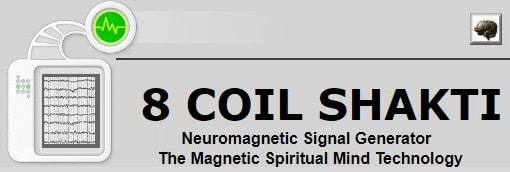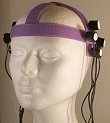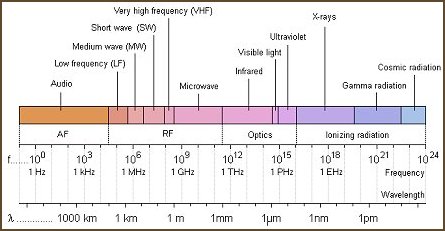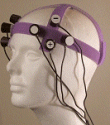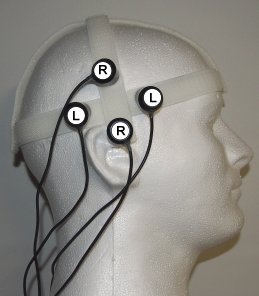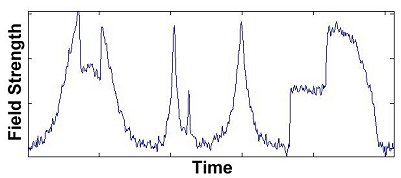Shakti does not Diagnose, Treat or Prevent Medical Disorders. No Statements about Shakti For Windows have been evaluated by the FDA.
Contact
Us.
(Opens in
a new
Window)
_____Main
_____How the
8 Coil
Shakti Works
_____Testimonials
and User
Reports.
_____Intense
Altered
States
_____Mood Enhancement
_____Meditation Enhancement
_____Personal Transformation
_____Frequently Asked Questions
_____Shakti and the Koren Helmet
_____Forums
_____Online
Demo
______Schedule
for
Sessions
______Setting
the
Volume
_____Safety
_____Credentials
_____For Ambidextrous People
_____Add-ons
_____Online Merchants /
Resellers
_____Technical Aspects
_____Reply to Critics
(Opens
in a new
window)
_____Order
Online_____
Contact Us
(Opens in a new Window)
.
8 Coil Shakti – Technical Aspects and Questions.
This page is written for both technicians and lay people with a bit of technical knowledge.
Shakti uses magnetic coils to output magnetic signals.
Shakti and EMF emissions
Shakti does not produce EMF emissions. However, a number of people have mistakenly assumed that magnetic signals involve this kind of output, so let’s look at it first.
EMF Emissions.
Let’s start by defining the word emission.
The American Heritage Dictionary of Science:
Emission:
n. Physics. 1) The discharge of electrons as from an electrode, caused by heat, light, or the impact of an electrical discharge, or beam of high-energy electrons.
2) Any radiation of energy by electromagnetic waves.
Wikipedia:
Emission: “In physics, emission is the process by which the energy of a photon is released by another entity, for example, by an atom whose electrons make a transition between two electronic energy levels. The emitted energy is in the form of a photon”.
EMF emissions (which can even include visible light) are varieties of radiation, and/or electrons. Shakti uses magnetic fields, which are neither radiation nor electrons. Electromagnetic radiation is composed of photons. Magnetic fields are not. Magnetic fields are not composed of the elementary particles that can interact with some organic compounds, nor are they composed of electrons, ions, or anything else that is encompassed by the word ‘emission‘.
Electromagnetic Frequencies.
In most cases, electromagnetic frequencies are very high. Microwaves, for example, include waves of 100,000,000,000HZ – a high frequency. Other electromagnetic frequencies are much lower, like those of radio waves. For comparison, audible sounds run from 10 or 20 hertz to 20,000 hertz. The phrase “electromagnetic frequencies” most commonly refers to the frequencies of the electromagnetic spectrum. Shakti uses magnetic fields, which are not a part of the electromagnetic spectrum.
This illustration shows the Electromagnetic Spectrum. Magnetic fields don’t appear in it because they aren’t in this spectrum.
Click here to view larger image.
What frequencies are used in the Shakti signals?
This question doesn’t apply to Shakti’s signals. The length of time it takes for a signal to change shows its frequency, but what if the frequency of a signal changes constantly in irregular ways? Then it’s a ‘complex’ signal. Technicians usually have a lot more experience with ‘simple’ signals (like the kind you get with AC current) than ‘complex’ ones, and often make the mistake of discussing them as though they were the same. Most of Shakti’s signals are irregular ‘bursts’, and cannot be said to have any particular frequency, though the signals will ‘average’ to frequencies from 4 to 400 hertz (approx.).
Describing the Shakti signals as frequencies will make them seem like something they aren’t. Many technically minded people have made the mistake of thinking that all signals must have frequencies, and therefore, the Shakti signals must also be frequencies. The illustrations below show why this isn’t so.
____________
Shakti’s signals are irregular ‘bursts’ containing many frequencies.
Like Shakti Signals (Irregular bursts).
Unlike Shakti Signals (simple frequencies).
____________
Is Shakti EMF?
No. EMF stands for:
1) Electromagnetic frequency,
2) Electromagnetic force
3) Electromotive force, and
4) Electromagnetic fields.
Shakti uses magnetic fields. It’s possible to bend the vocabulary of physics to contrive an acronym from “electromagnet fields” (magnetic fields produced by an electromagnet), but magnetic fields are the same whether they are produced by a refrigerator magnet or a magnetic coil, so it really wouldn’t stand for anything unique. In the rigorous language of physics “electromagnetic” can refer to the output of magnetic coils, but not without a touch of ambiguity.
Does Shakti emit EMF (or use EMF emissions)?
No.
Electromagnetic fields:
The phrase “electromagnetic fields” refers to more than one phenomenon. One of them is the kind of electrical field that surrounds high-voltage power lines, and is composed of charged particles. Cell phone emissions are an example of such a field phenomena, and some people think these may pose a health risk. Shakti does not use this kind of output.
Are magnetic fields from electromagnets safe?
Yes, they’re safe.
The term ‘electromagnet fields’ isn’t standard engineering vocabulary, but it makes the concept clear for people who don’t speak it. In order to avoid confusion, the phrases ‘magnetic coils’ and ‘magnetic fields’ are used throughout the Shakti website.
This refers to the magnetic fields utilized by Shakti, and the magnetic fields created by magnetic coils – like a nail wrapped with wire, and connected to a battery. These are simple magnetic fields created by two poles, and are not composed of ions, electrons, or photons. Fields from an electromagnet are made of the same ‘stuff’ as the earth’s magnetic field or the field you find around a magnet that holds a paper to a refrigerator. The are ‘made’ of ‘lines of force’, and are not ‘EM emissions’. These do not pose a health risk of any kind. In fact, stereo headphones produce magnetic fields (in about the same range as Shakti’s magnetic field strengths) and these have been used for decades.
Rats have been exposed to this variety of magnetic fields for their entire lives, including while they were in the womb, which were later found to have no negative effects on any tissues, including brain tissues (source – in full text).
Magnetic fields from electromagnets are not EMF emissions.
What are magnetic signals?
Magnetic signals are magnetic fields that contain information. The information is derived from EEG traces, so that it originates in the brain. It’s ‘encoded’ in the changing amplitude (field strength), which changes every few milliseconds. These magnetic signals can be described as time and amplitude varying magnetic fields. In other words, the amplitude (how strong the field is) changes many times each second.
Stereo headphones.
Most people have worn headsets that output “Complex Magnetic Signals” – the kind of magnetic field used in Shakti. Like Shakti, stereo headphones receive input from an audio source, and the coils in the headphones create magnetic fields that get stronger and weaker as the level of the music changes. However, these are not EMF emissions. Listening to your favorite music through headphones does not have the risks associated with EMF emissions, and neither does Shakti for the same reason.
Shakti uses magnetic coils connected to a computer sound card. Is the output from the sound card AC or DC?
I asked an electrical engineer this question, and this was his answer:
“The output of a sound card (or a CD player) is modulated DC. The polarity – one wire is positive and the other wire is negative – is always the same, no matter how the amplitude varies.
A speaker or headphones uses a magnetic coil to move a diaphragm to make sound.
Generally, the goal is to move the coil two ways to make sound. However, because of the springiness of the coil you only need one polarity. For example, a given voltage might push the coil. When the voltage drops lower, the voice coil will rebound and move the other way.”
How can the fields reach deep inside the brain?
To answer this, I’d like to quote Gareth Hatch, Ph.D., from his contribution at www.physlink.com He was asked (underlining ours):
“Is there any material that can block a magnetic force?“
Answer:
Magnetic fields… cannot be blocked, no. That is, there is no such thing as a magnetic insulator. A major reason for this has to do with one of Maxwell’s Equations:
del dot B = 0
… which implies that there are no magnetic monopoles (a single north or south pole, without it’s opposite partner). That is, where as you can separate electric monopoles (positive and negative charges) such that an E-field never has to terminate on the opposite charge, you cannot do this with magnetic poles. There do not exist any magnetic monopoles. There is no such thing as “magnetic charge.” (Charge is electrical, not magnetic) All magnetic field lines MUST TERMINATE on the opposite pole. Because of this,
there is no way to stop them — nature must find a way to return the magnetic field lines back to an opposite pole.”
According to one medical journal publication a “…magnetic field passes through all head structures with no attenuation…“
Shakti’s magnetic signals reach deep inside the brain because there is nothing in or around the brain that can stop them. The information in the signal is more important than the field strength, just like a whisper can say the same thing as a shout; different strength, same info.
Some psychologists and contributors to online forums have speculated that the Shakti signals won’t reach the brain. No matter what their credentials, these people are making the mistake of confusing EMF with magnetic fields.
Here is a link to a blog by Dr. Michael A. Persinger that discusses this point (link opens in a new window).
What about current induction?
Shakti doesn’t create its effects by inducing current. It relies on influencing the magnetic fields that are working in the brain at all times. The brain’s own electrical activity produces magnetic fields, and the Shakti signals ‘communicate’ with these (endogenous) fields that naturally appear in the brain.
How can a sound card play an EEG signal?
The process of getting an EEG signal out of a sound card begins with capturing the signal on an EEG machine. The trace is scanned, and the resulting image is used as a template from which an audio file is derived. The audio file is ‘played’ using a specialized audio player (in the Shakti software). The ‘pattern’ (or the ‘shape’) of the signal is preserved throughout. Because the signals are ‘complex’ and irregular (complex signals can’t be described as a sine function), they aren’t “simple” frequencies, they can’t be produced using tone generators, function generators, sweep generators, or synthesizers. Only audio files that begin with an image of an EEG trace can target specific brain parts. Their output is fed into a set of magnetic coils, which produce fields with strengths that rise and fall in the same patterns as the original EEG traces.
A Complex Signal.
Click here to view larger image.
How can the coils ‘target’ specific structures without being precisely oriented to focus on them?
The coils don’t ‘target’ the brain structures. The signals target the structures, not the coils. Just as brain structures respond to chemicals with specific shapes, they also respond to magnetic signals with specific patterns – if the pattern matches an electrical firing pattern that comes from that structure. Aspirin ‘targets’ inflammation without being injected into the inflamed area. An antibiotic will ‘target’ a bacteria, and have little effect (if any) on a virus. If you’re in a crowded room, and only a few people in it speak Portuguese, you can send them ‘a target’ message only to them by calling it out in Portuguese. Everyone will hear you, but only they will respond.
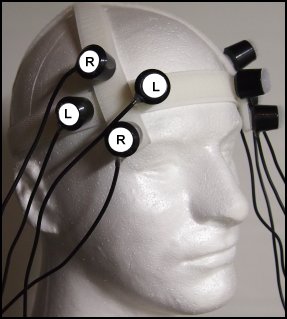
Some people have thought that Shakti is a “magnetic probe”. Shakti inputs information to the brain, and takes no readings from it. Reading information from the brain uses a completely different technology – EEG (brain waves). In the laboratory, the two technologies are routinely combined, but most Shakti users neither need nor can use EEG.
Some sound cards will sometimes add ‘spikes’ with sudden changes in volume. Doesn’t this prevent the signals from matching the original EEG traces?
No. The shape of the original signal bears information the brain responds to. Spikes added by the sound card don’t. The latter doesn’t disrupt the former. When a Shakti signal is being run to the headset, the information in the original EEG trace is applied. At the same time, the brain is exposed to the earth’s magnetic field, fields from the (presumably) nearby computer monitor, electrical appliances, and a host of fields from minor sources – and any spikes from the sound card, too. It’s a matter of ‘signal-to-noise’. The noise from a sound card (and there is not really very much of it) doesn’t interfere with the signal. However, an electronically clean environment is still better than a noisy one. No one knows how much electronic noise it takes to overwhelm the Shakti signals, but it can happen – in principle. Newer sound devices don’t produce these spikes in any case.
What about the ‘hum’ that some sound cards make when there is no active output. Doesn’t that interfere with the signals?
No. Shakti uses its own dedicated audio player (or Windows Media Player) to produce the signals, and whenever a signal is being run there are instructions going to the sound card, even when the signal has a section of silence (producing zero-amplitude fields). The hum that some sound cards produce never appears. Even if it did, that hum wouldn’t have any neural information in it, while the Shakti signal would. The Shakti USB sound device doesn’t have this issue in any case.
Are these signals available to be used on an Ipod or cell phone?
No. Besides the fact that they’re corrupted when they’re converted to MP3 format, they are never distributed separate from the information needed to use the whole system, and that is not possible on an Ipod or cell phone. Above all, they don’t have enough power to run the signals. Shakti needs a desktop or laptop computer.
Do you provide information to help people build their own Shakti systems?
No. “Do it your selfers” need to “do it themselves” in the library as well as at their workbenches. They will get their own results, making their own mistakes along the way, for which they, and they alone, are responsible.
Where do Shakti’s Magnetic Signals come from?
EEG (“Brain Wave”) traces are the source for most Shakti signals.
Here is a single EEG trace.
This is a capture (freeze-frame) the same trace (signal).
This is a sound file (in stereo) derived from the EEG trace.
The Shakti Signals are carried by magnetic fields that rise and falls in strength, following the patterns in the EEG signal, as shown above.
_____ Complete instructions are embedded in the software. Free Tech Support is Available. 8 Coil Shakti – $285.00 In the USA, you can order by calling (toll-free): Email Your Questions About The 8 Coil Shakti Contact Us 30 Day Money Back Guarantee. Refund terms and conditions Legal: Templates for many signals are licensed for use with Shakti For Windows by Dr. M.A. Persinger and Stan Koren. . . . . . . . .
_____
Shipping – (USA) $12.50 (International) – $25.00.
_____
855-408-7888
By calling this number, you agree that you understand and agree to the terms of sale, listed HERE.
Read them before you order.
_____
_____
_____
